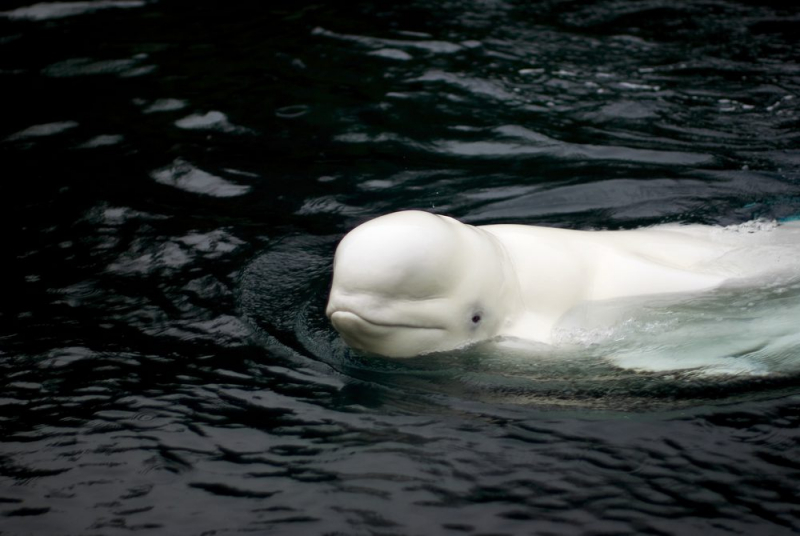Belugas’ unique coloring helps them survive
The skin of a beluga is 100 times thicker than that of a terrestrial mammal and ten times thicker than that of a dolphin. The name "beluga" comes from the Russian word "bielo," which means "white." Undoubtedly, because it is entirely white or whitish-grey, mature belugas are rarely confused for any other species. Calves are often born grey and turn dark grey or bluish grey by the time they are a month old. To make up for the absence of fat, a calf's skin is thicker when it is born. The calf sheds its skin as it grows a thick layer of blubber. At the ages of seven years for females and nine years for males, they subsequently begin to gradually lose their pigmentation until they reach their unique white coloration.
Their coloring is supposed to function as camouflage to shield them from predators like polar bears, predators, and killer whales as they swim around sea ice in their Arctic environment which enables them to blend in with the polar ice caps. Belugas have highly developed skin sensitivity, which is crucial for their social behavior that is focused on touch. The belugas lose their skin seasonally, unlike other cetaceans. Environmental signals like temperature and salinity may cause this. The epidermis thickens and the skin might turn yellowish throughout the winter, notably on the back and fins. They lose their epidermal covering by rubbing themselves on the gravel of riverbeds as they migrate to the estuaries in the summer.












